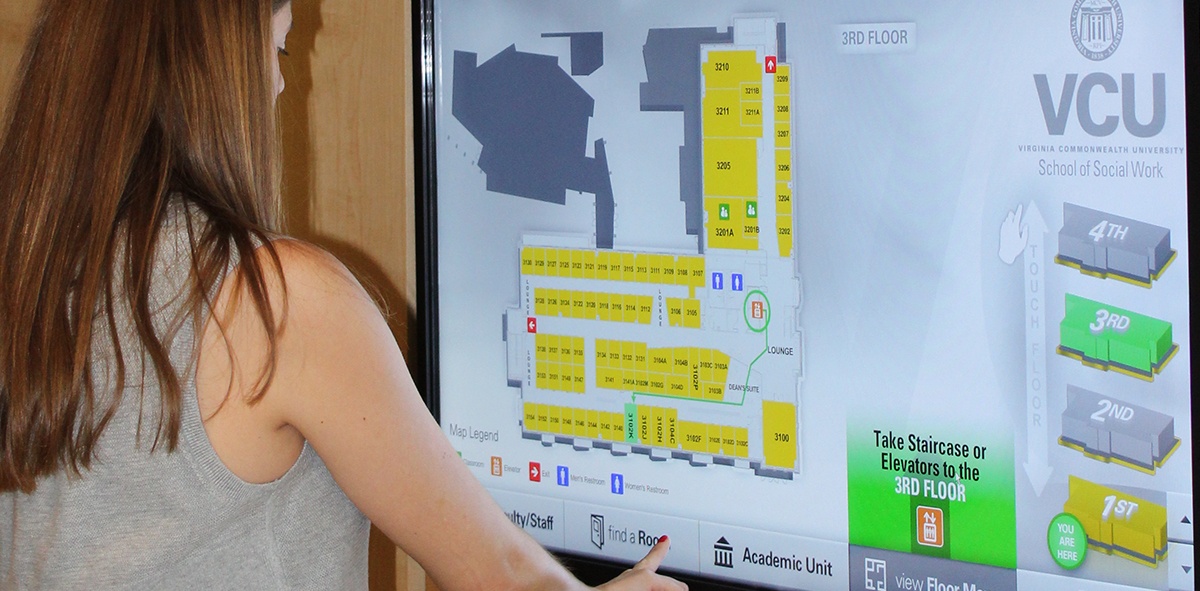
Why Your Campus Needs Digital Signage Right Now
July 27, 2017 by guest author, Kenneth Brinkmann
Guest Post: Debbie DeWitt, Visix
College is a dynamic and exciting place where people can grow and learn how to better interact with the world around them. It’s a large and very diverse group of people, and part of the job of any higher education institution is to knit this unruly mass into a cohesive whole that is focused on making the campus environment stimulating, while still focusing on the future.

Debbie DeWitt
Digital signage for your campus can help – there’s just no better tool to improve communications with students, faculty, staff and visitors. Place your displays, get some channel players and a content management software package, and you can reach everyone, everywhere, at any time. Messages can be created in mere moments, scheduled to be displayed when needed, and drop out of rotation when no longer relevant. Multi-window layouts can show lots of interesting information at the same time in a way that’s still easy to comprehend, interactive touchscreens allow huge amounts of information to be available on a single screen, and mobile integration lets people take the information with them as they move around campus.
Today people get the majority of their information and entertainment digitally, often using portable devices. Children as young as one-year old are learning how to use tablets, and people entering and attending university today seem to be almost constantly looking at their phones. In fact, studies show that Millennials, who have grown up with the internet and digital interfaces, change media as many as 27 times an hour. Digital signage can be used as an extension of that online world – turning any space you want into an information-rich environment that is constantly communicating to your audience.
Widgets
Using video, animated backgrounds and other dynamic media grab people’s attention, getting them to look at your screens. Using widgets and feeds to show weather, current date and time, local traffic, and even news feeds and tickers get them to keep looking a bit longer, and then the actual content of your messages has time to get to them and sink in.
Welcomes
Digital signage for colleges can also help with recruitment of new students and faculty. People come in and see a modern, forward-thinking institution that’s in line with the times, and they want to be a part of that. They see an environment that gives them a consumer-like experience when accessing information, and that’s both familiar and comfortable. It’s also very green – no more paper and printing waste (or costs), just electricity. Onboarding new students becomes easier as well, with helpful messages to welcome and help orient them, and interactive wayfinding to make getting around campus easier as well.
Alerts
One of the most important advantages of digital signage is that it creates a common community – everyone sees the same messages, and has the same information, and this brings them together into a common culture. This can be especially important when considering crisis management – if an emergency arises, alerts are sent to all your displays at once, and can integrate with other emergency response systems to immediately notify everyone of the situation and give them clear instructions.
Timesavers
Digital signage saves time, as well. Messages drop off playlists automatically, and the content can be updated immediately to reflect any last-minute alterations or changes, which is important in such a fast-paced environment. Things like menu boards can not only give current menus and specials, but even allow people to place an order right at the screen so it’s ready for them when they arrive. Posting transit schedules and real-time shuttle mapping can also save people time and effort, and help them get where they need to go efficiently.
Recognition
You can recognize achievement using digital signage – from awards and honors students and faculty have received, to keeping everyone current on the football team’s progress throughout the season. Donor boards let you recognize contributors to your institution and share far more details about them than just a brass plaque on a wall.
Events
Participation in events and programs will see an increase when promoted on digital signs. You can even use live stream channels to show campus events on selected screens, or a talk from the dean. Integrating with social media can also get people involved and create a two-way communications deployment that truly mirrors the digital world we now live in.
Advertising
You can even use your digital signage to generate revenue. Charge student clubs and organizations a nominal fee to promote their events on the system, while opening up your screens to local businesses that offer products and services your audience will find interesting, for a fee.
The system can be as open or closed as you like – you can have a single content creator and manager of the whole system, or open it up and have dozens of people creating messages. Students can have an opportunity to get hands-on experience in media, digital communications, design and marketing. Faculty can share notes, lesson plans, reading lists and last-minute updates and changes. You can even create campaigns to reinforce learning initiatives or campus-wide awareness programs. Digital signage can help both student and faculty get training for the world of today as well as the world of tomorrow, and aligns them with current events, issues and trends.
And it’s scalable and can be surprisingly affordable. You can start simply, with just a few screens, and grow your system over time (just make sure to plan for the future, which will save lots of headaches down the road.) Web-based systems mean you can update and schedule messages and other content from literally anywhere with an internet connection, and cloud-based systems allow an inexpensive way to store your content library.
More and more higher learning institutions are starting to see the usefulness of digital signage and technology. There’s a study that shows that applying technology to education reduces student stress by 45%, improves confidence by 46%, increases their efficiency in the learning environment by 57% and helps them better prepare for class by 67%. NEC commissioned a report on dynamic signage in higher education that is full of the benefits of using this technology right now on campuses.
And as more universities and colleges adopt digital signage, those that don’t will be seen as “quaint” at best and “outdated” at worst. We live in an information age, and campus digital signage helps turn your entire property into an information-rich, modern place where people will feel at home.



Leave a comment